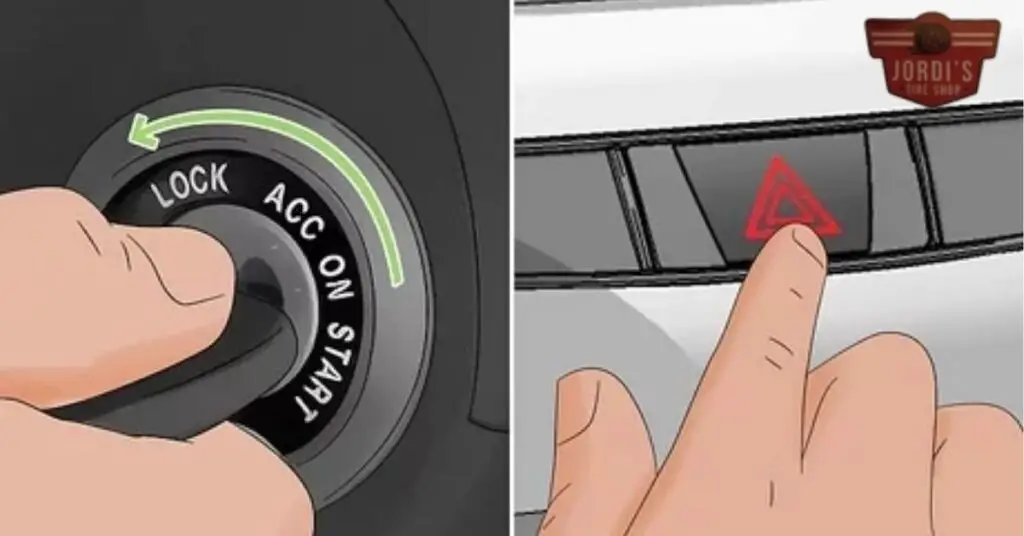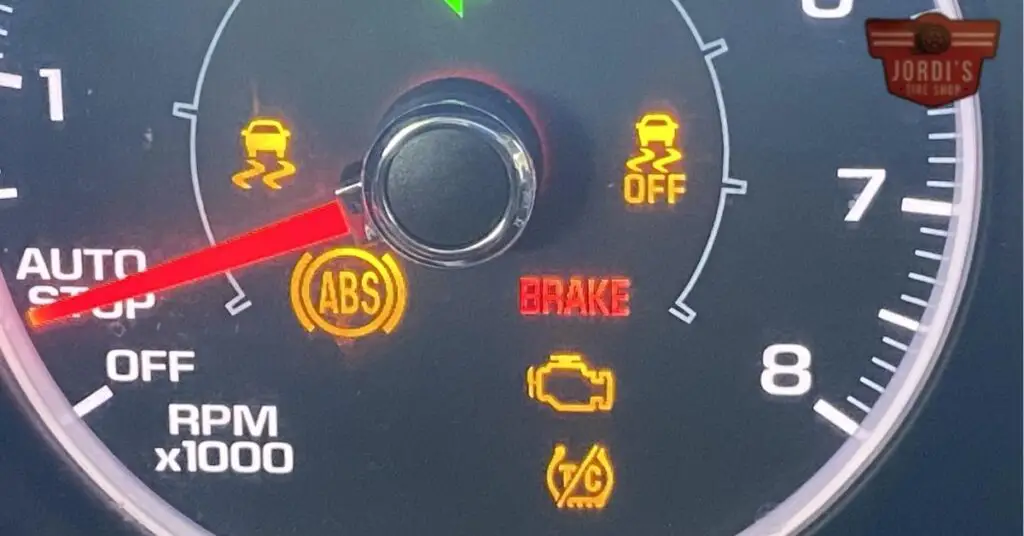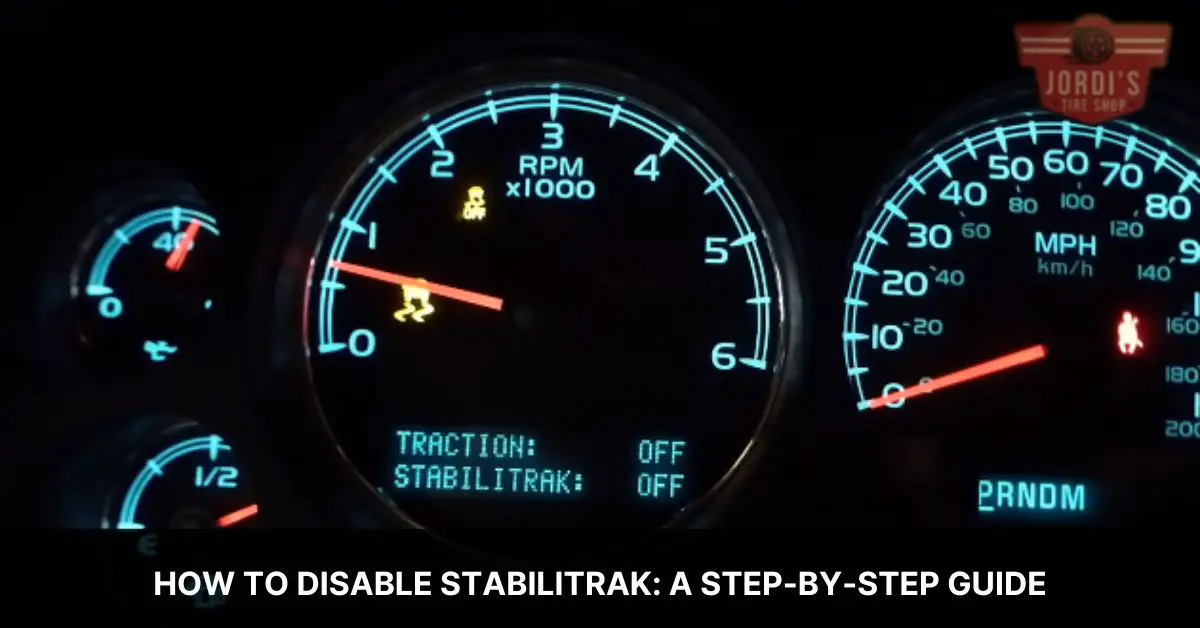We’ve all been there—driving along when suddenly our vehicle’s StabiliTrak system decides to kick in, sometimes at the most inconvenient moments. While it’s designed to enhance our safety by improving vehicle stability, there are instances where you might need to disable it, whether for maintenance purposes or to gain better control under specific conditions.
In this article, we’ll guide you through the steps to safely turn off the StabiliTrak system in your vehicle. It’s important to remember that while disabling this feature can be beneficial in certain scenarios, it’s crucial to understand when and why you’re doing it. So, let’s dive into the nitty-gritty of how to manage this aspect of your vehicle’s safety features, ensuring you’re well-informed and prepared for whatever reason you choose to take this route.
Understanding Stabilitrak: What Is It?

StabiliTrak, also known as Electronic Stability Control (ESC), plays a crucial role in vehicle safety. It’s an advanced system designed to help drivers maintain control during difficult driving conditions. By detecting and reducing loss of traction, StabiliTrak can prevent skidding or sliding during sudden maneuvers or in adverse conditions such as wet or icy roads.
The heart of the StabiliTrak system lies in its sophisticated sensors. These monitor several vehicle elements, including wheel speed, steering angle, and lateral acceleration. When the system detects a discrepancy between the driver’s intended path (based on the steering angle) and the vehicle’s actual path, it springs into action. It applies brake pressure to individual wheels and, depending on the situation, can also adjust the engine torque. This helps bring the vehicle back on course, aligning with the driver’s intended direction.
Vehicles equipped with StabiliTrak often include a button or switch, typically located on the dashboard or center console, allowing drivers to modify or disable the system. While StabiliTrak offers immense safety benefits, there are specific scenarios where disabling it can be beneficial. For instance, when driving in deep snow or mud, turning off StabiliTrak might provide better traction by allowing the wheels to spin freely.
It’s important to remember that disabling StabiliTrak should only be a temporary measure. Once the particular driving situation necessitating its deactivation is over, activating StabiliTrak as soon as possible is wise to ensure optimal safety.
Having a comprehensive understanding of what StabiliTrak is and how it functions gives us the knowledge we need to make informed decisions about disabling it—ensuring we can manage our vehicle’s stability control confidently and safely.
Reasons to Disable Stabilitrak

Following our exploration of the StabiliTrak system’s functionality and its significant role in ensuring vehicle safety, let’s delve into why one might consider disabling this feature. While StabiliTrak contributes to safer driving experiences under most circumstances, in certain scenarios, deactivating it temporarily could prove advantageous.
- Enhancing Traction in Specific Conditions: As briefly mentioned, driving in deep snow or mud might necessitate disabling Stabilitrak. In these situations, allowing the wheels to spin freely can help the vehicle gain the necessary traction to move, a process that StabiliTrak’s intervention may hinder.
- Off-Road Driving: For those who enjoy off-roading, disabling StabiliTrak can offer a more raw and unfiltered driving experience. It enables drivers to fully control the vehicle’s handling, which is often desired in unpredictable terrains.
- Performance Driving: Enthusiasts involved in performance or track driving sometimes prefer to disable Stabilitrak. This allows for more aggressive maneuvers, such as drifting, by removing the system’s automatic corrections that could interfere with such driving techniques.
- Diagnostic Purposes: In some instances, disabling Stabilitrak is necessary to diagnose or troubleshoot specific issues. Mechanics or knowledgeable vehicle owners might turn off the system to test the vehicle’s behavior and identify any underlying problems.
It’s crucial to recognize that while there are valid reasons for turning Stabilitrak off, it’s a feature designed to protect you by maintaining stability and control. If you decide to disable it, ensure it’s only for a brief period and under conditions where its absence can be safely managed. Remember to reactivate Stabilitrak once you return to standard driving conditions to maintain the highest level of safety.
How to Disable Stabilitrak
Disabling Stabilitrak in vehicles primarily focuses on specific situations that require temporary deactivation for improved handling or diagnostic processes. Understanding the need to switch off this safety feature under certain conditions, let’s dive into the correct method to do so, ensuring drivers can manage the system effectively when necessary.
Firstly, locate the traction control or Stabilitrak button, typically found on the dashboard or center console of your vehicle. The symbol is usually a car with skid marks. Upon finding the button, press and hold it for a few seconds. In most vehicles, pressing this button momentarily might only disable traction control, so it’s crucial to hold it down longer to fully disable the Stabilitrak system.
After holding the button, watch for an indicator light on the dashboard or a notification message that confirms Stabilitrak has been disabled. This acknowledgement varies across vehicle models, with some displaying a straightforward “Stabilitrak Off” message, while others may use generic traction control symbols or messages.
For vehicles equipped with a touch-screen infotainment system, the process might differ slightly. Navigate through the settings menu to locate the option for traction control or Stabilitrak. Selecting this option should present an opportunity to disable the system, confirmed again by a visual indicator or message on the display.
Reactivate Stabilitrak by simply pressing the button again or, for touch-screen methods, toggling the option back on through the system settings. Some vehicles automatically re-enable Stabilitrak when you restart the engine, ensuring the safety feature is active for standard driving conditions.
Keep in mind, deactivating Stabilitrak should only be a temporary measure for specific scenarios, as highlighted previously. Always ensure to activate it again to maintain vehicle stability and safety during regular driving conditions.
Considerations Before Disabling Stabilitrak

Before making the decision to disable StabiliTrak, it’s crucial to understand the implications and weigh the risks. StabiliTrak, designed to improve vehicle stability, plays a significant role in enhancing safety, particularly in slippery conditions. Disabling it, even temporarily, comes with considerations that should not be overlooked.
Firstly, assess the driving situation. If you’re encountering conditions where traction is compromised, such as deep snow or mud, disabling StabiliTrak might offer a temporary solution. However, ensure that these conditions truly warrant the system’s deactivation. Remember, StabiliTrak assists in preventing skids and maintaining control, and its absence could lead to challenges in vehicle handling.
Secondly, consider the vehicle’s condition. If your vehicle is showing signs of malfunction with the StabiliTrak system itself, indicated by persistent warning lights or error messages, consulting a professional is advisable before opting to disable the system. Often, issues can be resolved through repairs or adjustments without needing to deactivate StabiliTrak.
Lastly, be mindful of legal and insurance aspects. In some jurisdictions, altering a vehicle’s safety features might have legal implications or affect insurance coverage. It’s always best to verify with local regulations and your insurance policy to ensure that disabling StabiliTrak won’t lead to unintended complications.
Understanding these considerations ensures that if you decide to disable StabiliTrak, you do so with a full grasp of the potential risks and benefits. Our primary concern is safety, and while there are scenarios where disabling StabiliTrak could be beneficial, ensuring you’re making an informed decision is paramount.
Alternatives to Disabling Stabilitrak

After discussing the specifics of why someone might consider disabling StabiliTrak, including scenarios like driving in tough terrain, or for certain diagnostic tests, let’s explore some alternatives that can help maintain vehicle safety and performance without necessarily turning off this feature. These alternatives offer a middle ground, allowing you to tackle various driving challenges while keeping the vehicle’s safety systems active.
- Utilize Traction Control Options: Many vehicles come with the option to adjust traction control settings. Adjusting these can provide better control in conditions like snow or mud, without fully disabling StabiliTrak. This ensures you still have some level of electronic assistance.
- Select a Suitable Driving Mode: Modern cars often feature selectable driving modes such as Eco, Sport, or Snow. These modes adjust the vehicle’s performance parameters, including how the StabiliTrak system reacts. Choosing the right mode for your current driving situation can improve vehicle handling and safety.
- Upgrade Tires: Sometimes, the issues prompting the desire to disable StabiliTrak can be mitigated by simply upgrading to better tires. Winter tires, for example, can provide improved traction in snowy or icy conditions, reducing the need to disable StabiliTrak.
- Regular Maintenance: Ensuring your vehicle undergoes regular maintenance checks can prevent many of the issues that might tempt you to disable StabiliTrak. A well-maintained vehicle is less likely to experience the traction issues that StabiliTrak aims to correct.
Considering these alternatives, you maintain your vehicle’s built-in safety features while adapting to various driving conditions or preferences. This approach balances the benefits of StabiliTrak with the flexibility some drivers look for, all while prioritizing safety and performance.
Conclusion
We’ve walked through the ins and outs of the StabiliTrak system and when it might be time to switch it off. Whether you’re navigating deep snow or hitting an off-road trail it’s clear there are moments when disabling StabiliTrak can enhance your driving experience. Yet it’s crucial to weigh these decisions carefully considering safety and legal aspects. For those looking for a compromise we’ve introduced a few alternatives that keep you safe without fully turning off your vehicle’s safety features. It’s all about finding the right balance to ensure both performance and safety on the road. Remember regular maintenance and understanding your vehicle’s capabilities are key. Happy and safe driving!
Related Posts:

